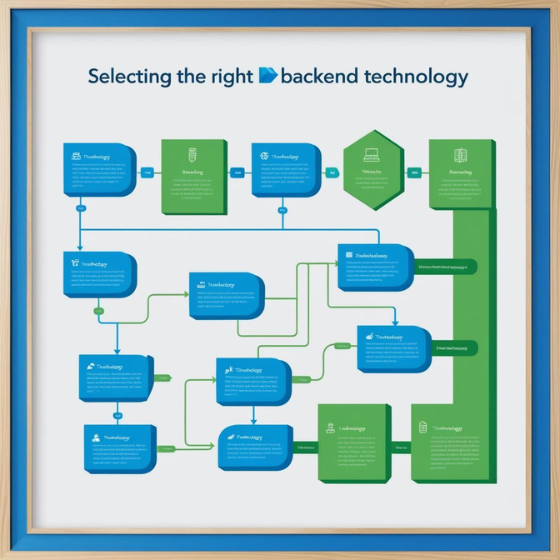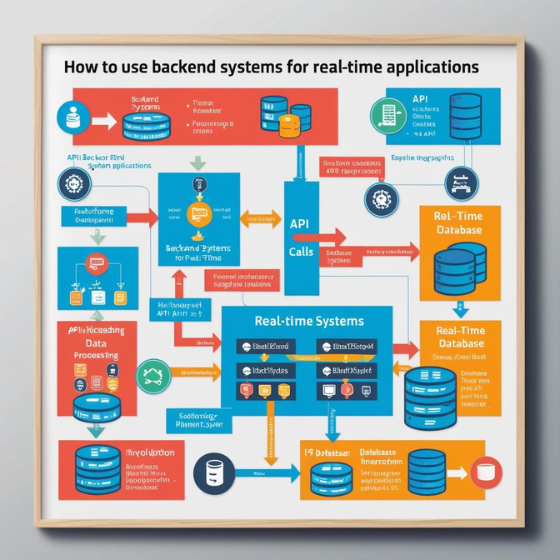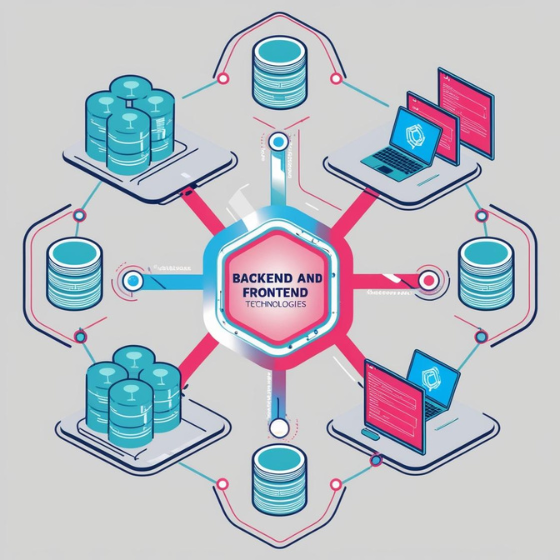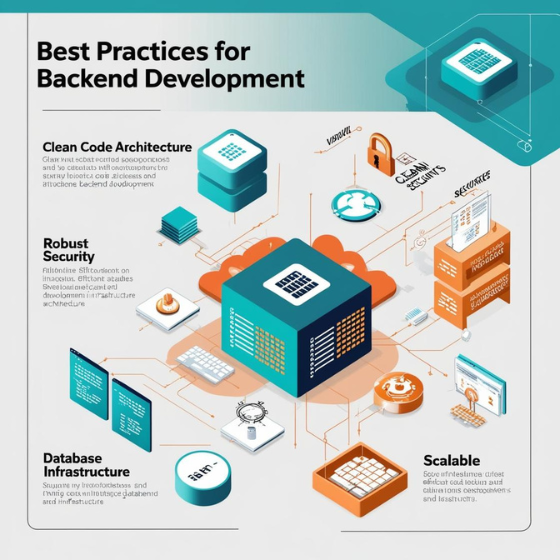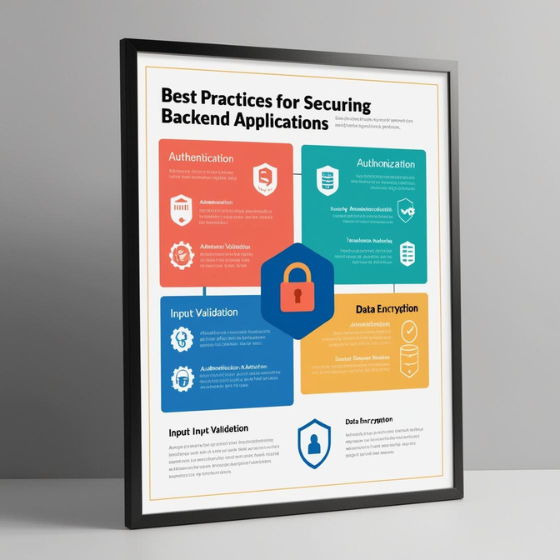How to Choose the Right Backend Technology for Your Business: A Comprehensive Guide
When it comes to developing a digital product, choosing the right backend technology is one of the most critical decisions you’ll make. In fact, 61% of developers consider selecting the right backend framework or technology stack to be the most important factor in ensuring the long-term scalability and performance of an application. But with so many options available, how can you be sure that you’re making the best choice?
In this guide, we’ll walk you through the essential factors to consider when selecting backend technologies and how to choose the right backend technology that aligns with your business goals and project needs. By the end, you’ll be equipped with the insights you need to make an informed decision.
Why Is Choosing the Right Backend Technology So Important?
Before diving into the details of how to choose the right backend technology, let’s first understand why it’s such a crucial decision for businesses. Your backend is the foundation that supports your entire application, handling everything from data storage to user authentication, server logic, and communication with external services.
By selecting the appropriate technology stack, you ensure your application:
- Performs efficiently: A well-chosen backend framework can handle high traffic and data loads smoothly.
- Is scalable: As your business grows, your backend needs to scale with it, without compromising performance.
- Is secure: Robust backend technologies will safeguard your data and ensure compliance with security standards.
- Can be maintained easily: Good backend technology ensures long-term maintainability and ease of updates.
Given these benefits, it’s clear that how to choose the right backend technology is not just a technical decision but a strategic one for your business’s success.
1. Understand Your Business Requirements
The first step in how to choose the right backend technology is identifying your specific business needs. Different backend technologies serve different purposes, and understanding your goals will guide your decision.
Key Questions to Ask:
- What is the expected scale of the application? If you’re developing a small-scale app, you might opt for a simpler framework. For large-scale enterprise solutions, more complex, scalable backend options may be necessary.
- What is your team’s expertise? If your team is proficient in a specific language or framework, it may be worth leveraging that expertise rather than adopting an entirely new stack.
- What kind of performance does your application require? High-performance applications (like gaming platforms or real-time messaging apps) may require specialized backend technologies like Node.js or Python with advanced concurrency handling.
By answering these questions, you’ll be able to narrow down the backend technologies that best suit your business requirements. At Sodio, we help businesses like yours select the optimal backend technology tailored to your specific needs. Learn more about our backend development services.
2. Evaluate Backend Technologies Based on Key Factors
Once you’ve defined your business requirements, it’s time to evaluate the different backend technologies available. Below, we’ll discuss the key factors you should consider when deciding how to choose the right backend technology.
A. Scalability
As your business grows, so too should your backend infrastructure. Scalability ensures that your application can handle increasing amounts of traffic and data without compromising performance.
- Node.js: Great for applications with high traffic and real-time data processing.
- Java: Known for its ability to scale large enterprise applications.
- Ruby on Rails: Good for rapidly growing businesses and startups.
Sodio specializes in helping businesses scale their backend architecture. Check out our scalable backend solutions.
B. Security
Security is paramount when choosing the right backend technology. A robust backend protects sensitive user data and ensures compliance with industry regulations.
- PHP and Laravel: Known for secure development features such as authentication and authorization.
- Python: Offers several libraries to secure your application and ensure safe data handling.
Sodio’s team can help integrate security best practices into your backend. Explore our security-focused backend services.
C. Performance and Speed
The performance of your backend directly impacts the user experience. If your backend is slow or inefficient, your users will notice. Choose a backend technology that provides the speed your app demands.
- Go: Known for its efficiency in high-performance applications.
- Node.js: Excellent for building fast, event-driven applications with non-blocking I/O.
- Java: Suitable for large-scale applications that require multi-threading and optimal resource management.
Our team can help you choose and implement the most high-performance backend solutions for your business. Contact us for a consultation.
D. Community and Support
It’s important to choose a backend technology with a strong developer community and adequate documentation. A large community means you’ll have better support, more plugins, and active development for updates and bug fixes.
- Node.js and Python: Both have large, active communities with ample libraries and frameworks.
- Ruby on Rails: A well-established community with excellent resources for developers.
At Sodio, we have in-depth expertise in several backend technologies, enabling us to provide support and guidance throughout the development process. Learn more about our backend development expertise.
3. Consider Long-Term Maintainability and Flexibility
When selecting how to choose the right backend technology, it’s also essential to consider the long-term sustainability of your solution. A backend system should not only meet your immediate needs but also be easy to maintain and update in the future.
Key Factors for Maintainability:
- Modular Code: Choose a backend technology that allows modular coding and separation of concerns, making it easier to update or add features later.
- Framework Maturity: Mature frameworks with a strong set of tools make maintenance easier as they are well-documented and widely used.
For businesses looking for flexible and maintainable backend systems, Node.js and Django are great options, thanks to their modular architectures and active ecosystems.
4. Budget and Time Constraints
Another key consideration in how to choose the right backend technology is your budget and project timelines. Some backend technologies are faster to implement and more cost-effective, while others may require a longer development cycle and higher investment.
Cost-Effective Options:
- Node.js: Open-source and fast to implement, making it a cost-effective option for startups.
- PHP and Laravel: Low-cost development with a wealth of pre-built packages and tools.
- Ruby on Rails: Great for rapid development, making it suitable for MVPs and startups with tight deadlines.
By selecting the right backend technology, you can keep costs under control while still building a robust solution. Sodio can assist in selecting a backend technology that fits your budget and timeline. Contact our experts today.
Conclusion: Make the Right Choice for Your Business
In summary, how to choose the right backend technology requires careful evaluation of your business needs, scalability requirements, performance demands, and security concerns. The right backend technology will help your business grow, scale efficiently, and provide a secure, fast, and maintainable solution.
At Sodio, we specialize in helping businesses select and implement the perfect backend solutions. Whether you’re building a simple application or a complex enterprise system, our team can guide you through the decision-making process and ensure that you choose the right technology stack for your goals.
Ready to make the right backend choice for your business? Contact us today to learn how Sodio can help you with expert backend development services.
